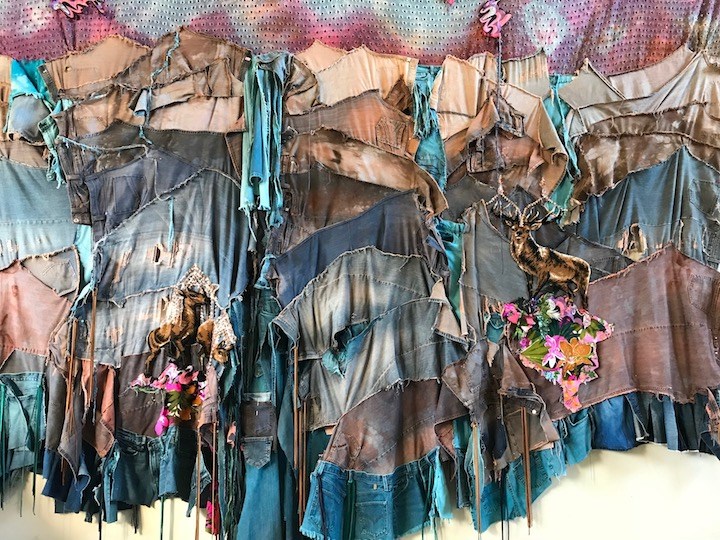Anastasia Schipani
On a dark night in Bangkok, over a decade ago, I held my lover, a brilliant artist, after he was shot by a hit man. A crowd from the busy streets outside of our renowned tattoo shop filled the space and encircled us as life left his body. This personal tragedy reoriented my understanding of the potency of life, love, death and art. Shortly after this epic shift, I worked in a Spanish nightclub whose walls were decorated with vintage bullfight posters. My consciousness forged a link between the brutal public spectacle of the bullfight and the cruel loss of my lover’s death.
During that time, I found the slang definition of Matador as Lady Killer in a dictionary and the impact of this meaning propelled me to research the bullfight further as well as to immediately begin to paint female matadors within an arena in which the fight transformed from a bloody battle into an amorous dance of love.
My work explores roots of reverence and warfare through a bullfight arena. Sacred symbols of bulls in art and culture can be traced back to the beginnings of human recorded history, particularly within matriarchal cultures. There has been a fascination with this powerful animal over thousands of years. The bull has been worshiped as a god counterpart to the goddess, it has been sacrificed to the goddess and has been integrated into many rituals. This symbolic union of woman, man and nature over time has become a battle ritual of One against the Other. For me, the bullfight references the transition from reverence of nature and balance into an eternally long period of domination, control over nature and warfare.
I have witnessed many bullfights over these years in Spain, Mexico and California and have found them to be extremely breathtaking and devastating at the same time. My obsession with the arena led me to be trained in the Portuguese style bloodless bullfight by a professional matador.
Often I hear people say that everything has been done already, yet I continue to be interested in exploring the possibilities of what can be. I feel inspired by new forms. I am a painter who has been working predominantly with textiles for some time. My most recent paintings had become more sculptural because I felt the desire to work outside of a traditional square frame, transforming the shape into more flowing artworks unconstrained by hard edges, thereby in my expression making art that is more feminine in perspective. In my art I see the ruins of the arenas of the world overgrown with nature, transformed by time.
For more information about the artist, please visit her website.




